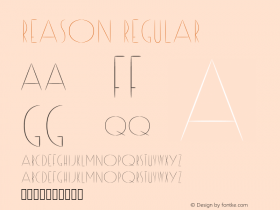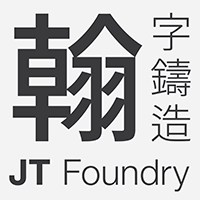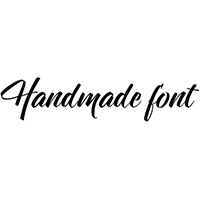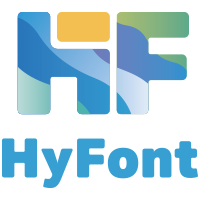ATypI 2010 Dublin: The Word – Keynote Addresses
Like I mentioned in my previous ATypI 2010 Dublin post, attendees usually comment more on all the surrounding aspects of a conference than on the presentations themselves. Yet one can't deny these presentations are as important a reason why we gather on a yearly basis. We hope to learn, to discover, to be entertained. They help us keep up to date with the state of our industry, our shared passion, through first-hand accounts of research and practice. The presentations are a defining factor for the quality; the range of topics shape the "personality" of a conference. This is why for example TYPO Berlin is quite different from ATypI – despite their similarities they have distinct audiences. Papers at ATypI vary from general observations to extremely detailed examinations, and in comparison the focus on type, typography, and lettering is much stronger.
For obvious reasons I will use the trajectory I followed throughout the conference programme as a guideline for this post. Only talks of the main programme will be discussed, because I was not there for Preface. I attended as many presentations as humanly possible, only missing a couple because I recorded material that should turn up as three future FontCasts. The talks were spread over two tracks, which is a huge improvement over the three tracks ATypI used to have up until quite recently. I think two tracks is just right. At previous conferences I often had the feeling I was missing out on things, something I didn't have at all in Dublin.
This also was my first ATypI conference with shorter 25 to 30 minute presentations. While in principle this is a splendid idea, it sometimes caused scheduling problems. Generally speaking short talks have more tendency to run over time. When you wanted to switch between tracks you ran the risk of missing out on the beginning of the next presentation. And because the entrance to the room for Track B was behind the speaker's desk you regrettably couldn't help but disturbing the presentation. The only solution I can think of is having a constant relay between both tracks, to be able to slightly delay the next presentation in one track so the audience from the other track have the opportunity to attend it from the beginning. However this has the potential to cause a bunch of other scheduling problems, so I am not sure about this. To be fair the student volunteers did a splendid job keeping everything on track. The small delays were rather an exception than a rule.
Keynote Addresses
Just like the bands headlining music festivals, keynote speeches define the flavour of a conference. ATypI 2010 Dublin was supposed to have five, but due to passport/visa problems Reza Abedini had to cancel his post-luncheon keynote on Saturday at the very last minute. Which I regretted, because I was really looking forward to hear him speak.
The Elements of Typographic Style, widely acknowledged as one of the standard works on typography, by Robert Bringhurst. Totally unrelated – I don't like Gudrun Zapf Von Hesse's Alcuin, the face used on the version 3 cover. Photo by Dave Kellam.
The conference officially opened on Thursday evening September 9 with a keynote address by author, book designer, and poetRobert Bringhurst. At the start of his presentation he admitted he had changed its content, shifting his focus from the designers of typefaces to the shapes of the letters themselves. Amongst other things Bringhurst delivered a convincing argument to not confuse similarity with sameness when designing multi-script alphabets, positing that "identically" shaped characters in for example Greek and Latin script should be clearly distinct. I am not going to go too much into detail, but the thing that bothered me is that – however interesting his talk was, please do not misunderstand me – it seemed to somehow miss a clear opening statement, as well as a satisfying conclusion wrapping up his demonstration. Also, Bringhurst was mumbling at times, making it quite hard for non-native speakers to grasp his every word.
As an aside, I would like to point out that being fluent in written English does not always guarantee being as well at ease with spoken English. As a non-native speaker I have occasionally been in a situation where people couldn't believe I had misunderstood something they said, not realising their accent and the speed of talking can sometimes impede understanding. English native presenters at international conferences should try to be aware of that and speak as clearly as possible. Just my two (Euro) cents.

Prof. Paul Stiff delivering an engrossing talk on Material texts. Now that is some wicked wood type; dig that chunky slab serif and extra bold didone. Photo by Nina Stössinger
Strictly speaking not a keynote address, but Material Texts,Paul Stiff's opening presentation on the first full day of the main programme was nothing short of epic, a perfect opener. It provided fascinating insights into literacy and the act of reading in a historical, socio-economic, and political context. I love it when speakers manage to yank us out of our own protected little typography world and make connections to everyday life, both on a micro and a macro level. And the topic perfectly fit the conference theme. Although I am quite sure Stiff used a pre-written text, his delivery was natural, and he did a flawless job at talking to the audience directly instead of simply reading off his paper (more about this later).
Slide from Dermot McGuinne's presentation A roman arrested in time, showing the punches for the Rome Irish faces. Photo by Catherine Dixon
Unfortunately I can't be as enthusiastic about A roman arrested in time, the keynote address byDermot McGuinnethat concluded day one. I can understand that, as a researcher at the National Print Museum, he was preoccupied with getting every single detail right. This however took on such exaggerated proportions that he repeatedly interrupted his presentation to correct himself and go over apparently inconsequential minutiae over and over again. This would have been perfect as a scientific paper. Had the subject matter been treated correctly, this story of discovery – full of interesting tidbits and fun anecdotes – could also have amounted to a great presentation. Instead it dragged on for what seemed like twice the foreseen length, and the larger story was completely lost in a quagmire of historic information.

Marian Bantjes reveals the cover of her upcoming book I Wonder. Photo by Catherine Dixon
The second full day was bookended by two keynote addresses. The first presentation in the morning was Meaningful letters by designer, artist, and writerMarian Bantjes. She gave an enlightening account of how the actual meaning of the words influences how she gives them visual form in her lettering work. Although this was mainly a show-and-tell presentation, Marian's highly personable, ironic presentation style peppered with anecdotes made it a very engaging one. Her slides included both commercial and personal work, and by personal I mean quite literally. Besides showcasing her upcoming book I Wonder – which looks fabulous by the way – she also showed very intimate pieces. Her letter to her mother almost moved me to tears, and Marian herself decided not to read a piece addressed to her brother. It's a testament to her integrity as an artist and her general awesomeness that she managed to elicit such strong emotions. And just like Paul Stiff's talk, her topic was another perfect tie-in with the conference theme.
Ellen Lupton concluded the second full day of the main programme with her presentation Typography and Authorship. Photo by Jeff Pulaski
With Typography and Authorship writer, designer, curator of the Cooper-Hewitt Museum, and criticEllen Luptontook care of the very last presentation on Saturday, just before the conference gala dinner. Lupton is a seasoned speaker with a self-deprecating and very humoristic style, a prime candidate for delivering the final keynote address. Amongst other things she stated that "without typography, the published word does not exist", and examined how designers grapple with the concept of authorship. Lupton's talk went back and forth within the boundaries of her topic, containing for example hilarious references to her budding love for the iPad and Irish teen pop singing duo Jedward. She managed to find the perfect balance between education and entertainment* that was much appreciated by the audience.
(*) If anyone ever catches me using "edutainment" I wish to be put down. Immediately.
Next episode, the rest of the presentations.
Header image:Robert Bringhurst delivers his keynote address on the opening night of the main programme. Photo by FontFont


































 闽公网安备35010202000240号
闽公网安备35010202000240号